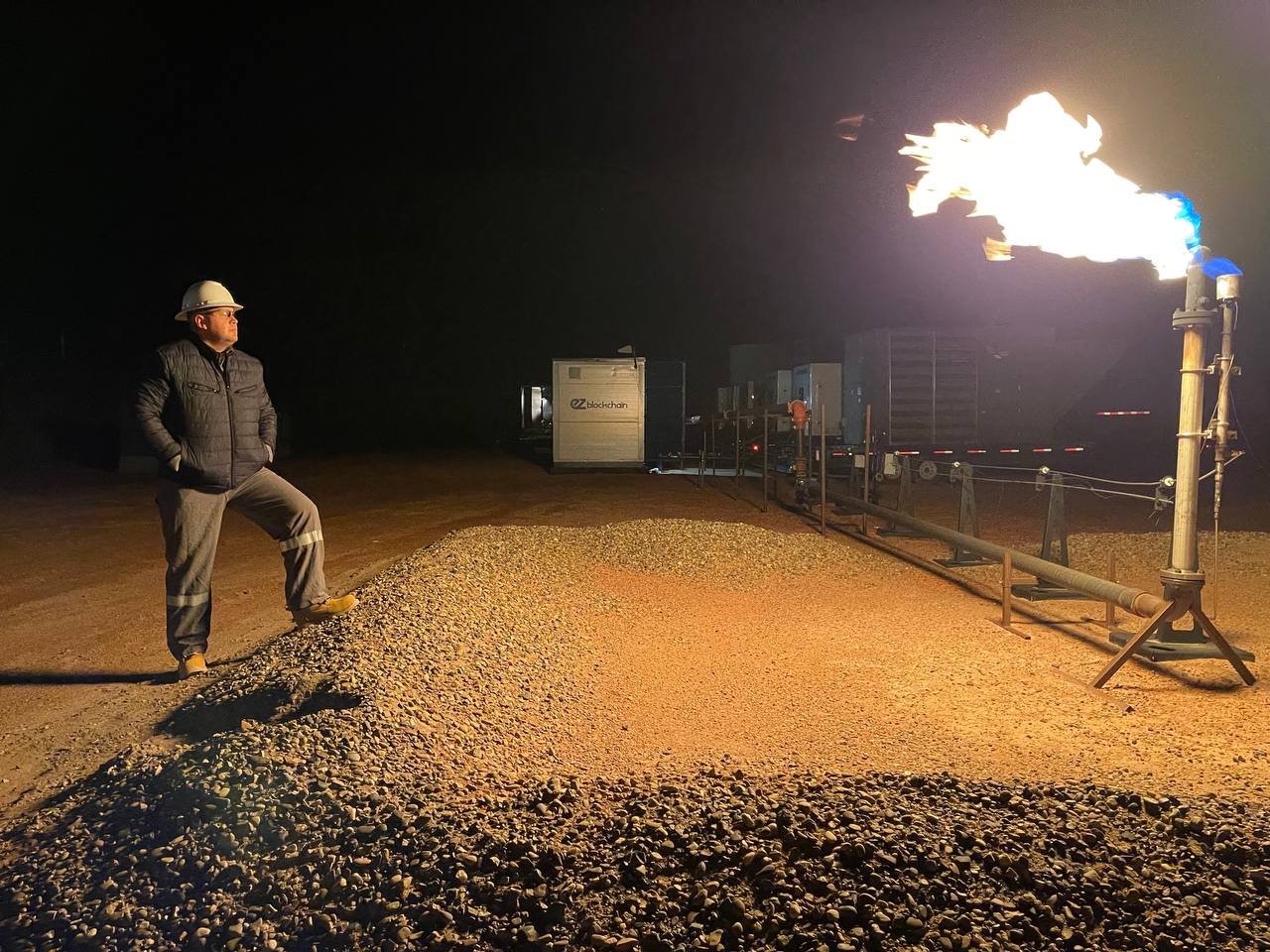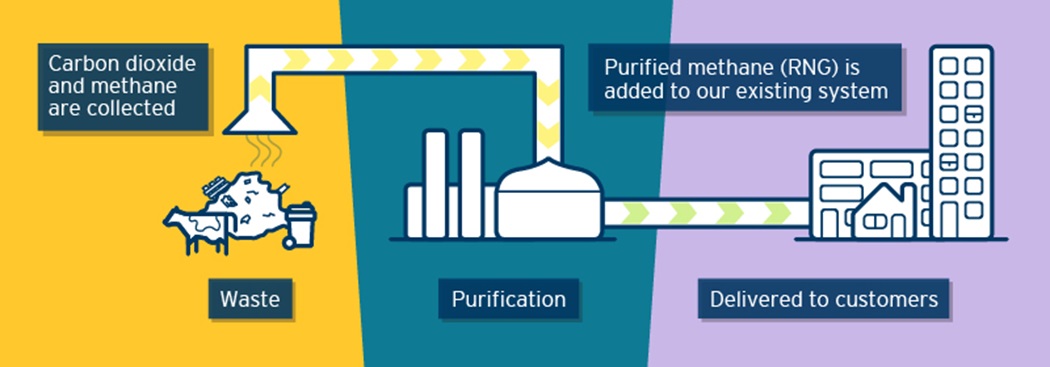Stay up to date with the latest news, announcements, and articles.
In this article, we’ll be diving deep into the concept of natural gas and answering the questions attached to it.
What is Renewable Energy
First, to determine if natural gas falls under any of the two energy categories, we need to know what they are.
Let’s start with renewable energy; these refer to naturally replenished energy sources which means they’re constantly recycled in nature and cannot be exhausted, making them sustainable. However, some forms of renewable energy like biomass are considered unsustainable due to the level of exploitation.
As you’ve probably guessed, the reverse is the case for non-renewable energy. They are exhaustible energy sources generated through the different natural processes with heat and pressure on ancient remains. They are limited and cannot be replenished to keep up with the rate of their consumption.
Types of renewable energy
Renewable energy sources can be decided into the following:
- Wind Energy: Generating energy through the wind requires wind turbines built in highly windy areas such as hilltops and plains. The energy is generated as a result of the power used by the wind in spinning the wind turbine blade. This energy form has evolved with increasing technological advancement and is capable of high-level energy generation.
- Solar Energy: This is energy from the sun; it is considered one of the cleanest energy forms since it has no pollution or gaseous release. The sun has a high potential of supplying the bulk of energy needed to power activities on the planet. However, we are yet to harness it effectively to its full potential.
- Hydropower: In its operational model, hydropower is very similar to wind energy. It is generated using fast-moving water from different waterfalls and rivers to turn the turbine blade. It is commonly used in a lot of countries.
- Geothermal Energy: This energy source is not readily available; its availability varies with geographical location and is more common in Iceland with high geothermal resources. Geothermal energy is obtained from the heat created by the slow degeneration of radioactive particles in the earth’s core. This energy is tapped by digging wells and accessing heated water, which is used as a power source for spinning turbines.
- Biomass Energy: This type of renewable energy is obtained from organic matter from plants and animals. These materials are turned into an energy source by burning them to create heat used to power a steam turbine. They are renewable and effective, but in most cases, they are neither sustainable nor a clean source of energy.
Is Natural Gas Renewable or NonRenewable?
We stated earlier that renewable resources are inexhaustible. To determine whether or not natural gas is renewable, we have to analyze how they are produced.
Natural gases can be classified into three types:
- Abiogenic methane: This is generated from hydrogen-rich carbon deposits. They are hard to mine and are almost inaccessible.
- Biogenic methane: This is produced from microorganisms as a by-product of waste processing. They can be found in decaying plantations or lands with cows. Methanogens are microorganisms that survive living off decaying matter, and their excrete is methane.
- Thermogenic methane: This is created from the effect of pressure and heat on animal and plant fossils for millions of years.
Using this classification, we can deduce that natural gas is predominantly non-renewable, although biogenic is considered renewable. This makes natural gas a partially renewable energy source.
Why Is Natural Gas Not Renewable?
Natural gas is formed over thousands or millions of years due to heat and pressure on fossils or matter buried deep in the earth’s crust. This means they cannot be replaced at the rate of consumption.
Worldwide natural gas consumption has steadily increased during the past 20 years but reached an all-time high in 2019 during the lockdown. With a global consumption rate of roughly 3.8 million cubic meters and an estimated supply of 494.4 trillion cubic feet, we are expected to completely exhaust our natural gas supply in approximately 50 years. This means most natural gas is not only a non-renewable resource but also a rapidly depleting one. However, there is some renewable natural gas.
Therefore, we can conclude natural gas is partially renewable.
Renewable Natural Gas
The threat of climate change has always seemed unreal, and yet around 20 million people are displaced yearly because of its effect. Natural gas extraction and usage not only contributes to global warming but has a lot of harmful effects of its own.
The realization that a change was needed triggered an energy revolution, and Renewable Natural Gas was created. Renewable Natural Gas (RNG) is a kind of natural gas produced organically by the action of microorganisms on waste.
It is completely interchangeable with natural gas and is most commonly used in gas vehicles. Because they are produced organically, they are replenished by nature and are thus inexhaustible.
Advantages of Renewable Natural Gas
Renewable Natural Gas (RNG) was developed to counter the effects of climate change and serve as a cleaner and greener alternative energy source.
Advantages of renewable natural gas are:
- Reduction in greenhouse gas emissions by up to 400%.
- Improved waste management and decreased groundwater contamination.
- Increased green energy production to supplement fossil fuels.
- Revenue generation for Farmers and employees in waste management systems.
- Methane capture and re-use, thus reducing worldwide emission rates.
- Income and job generation as well as an economic overhaul.
Does Renewable Natural Gas Affect Climate Change?
Renewable Natural Gas (RNG) was an ingenious solution, but questions persist. Will it do enough to change the situation? Skeptics argue that while it is a brilliant idea, it is not yet widely affected and cannot effectively reverse the effect of climate change.
Among many who believe that RNG can make a difference, the World Revenue Institute(WRI) stands out.
In an enlightening article, WRI stated that Renewable Natural Gas could make decarbonization contributions to the extent that it results in a net reduction in global methane emissions.
Also, RNG can be easily utilized with existing infrastructure making it cost-effective and easily adaptable.
Lastly, an impressive percentage increase in usage yearly indicates RNG is on a journey of wild acceptance.
It is the hope that in combination with proper legislation, awareness, and scalable technology, RNG will become a great tool against climate change and its drastic effects.
EZ Blockchain solves global waste energy problems
The realization of a problem is the first step towards a solution. A paradigm shift from limited, exhaustible resources to renewable, continuous ones cannot be overemphasized.
At EZ Blockchain, we understood the problem and its environmental implication, and this drove our mission to create a gas flaring mitigation solution. This solution is eco-friendly, economical, profitable for both producers and landowners while meeting environmental protection regulations.
An innovative company, EZ Blockchain is breaching the gap between the energy sector and the blockchain ecosystem. We believe solving problems associated with gas flaring and stranded gas problems is a true win, win for both the energy and crypto industries.

Also, the EZ Smartgrid flaring mitigation system serves as a unique solution for the existing wasted energy problem in the oil field. Our solution consists of a mobile data center and mobile gas engine generator, which helps in the conversion of waste, flared gas into electricity which is immediately used onsite to power the mobile data center, EZ Smartbox.
This system does not require a connection to the grid; all electricity produced is used onsite. This eliminates the wasted flaring associated with gas and harnesses it to produce electricity used to power mobile data centers on the well pad without distributing energy to the grid.
We are on a quest to solve global waste energy problems with the help of crypto mining. We believe this is achievable through the strategic implementation of our innovative and revolutionary solutions.
Fill out a form and our bitcoin mining expert will contact you.
FREE CONSULTATIONchoose
a miner
profit and
understand data?
business remotely
with EZ Blockchain?
Fill out a form and our bitcoin mining expert will contact you.















